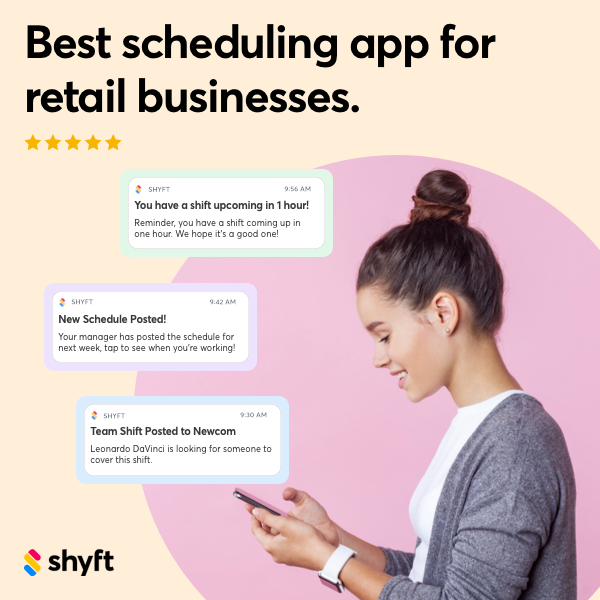This article has been published in collaboration with our partner Axsium.
If you’re a retailer, you’re likely determining what role brick-and-mortar stores play in your omnichannel strategy. It may seem like digital heavyweights like Amazon (and even Walmart’s online store) are dominating customer shopping preferences, but shopping in the store is still valued by consumers.
According to research by the International Council of Shopping Centers, 78% of consumers prefer to shop in-store, and they spend six times more than when they shop online. When asked why this is the case, shoppers would be likely to give you the same answer: they choose to shop in stores because of the service they receive.
And that last point begs the question: What are you doing to ensure your associates are delivering the best customer service possible?
Employee Engagement Impacts Performance
According to research on employee engagement, employee job attitudes are shown to influence business performance. When associates feel more invested in their company and role, they’re more likely to make the extra effort to delight customers. It’s also been shown that frequent recognition is key to engaging employees.
In order to provide the shopping experience your customers crave, your company needs to engage associates and train them on how to deliver top-notch service.
And while it’s clear that employee engagement is a key to growing your bottom line – through increased productivity and happier customers – acting on this insight is often easier said than done. Store-level training and top-down communications can be fraught with challenges because you need to work with store managers to make sure training and communication actually reach frontline workers.
Some managers will follow through as you had hoped. Others may deliver a message to workers that isn’t quite what you had intended. Or some managers, particularly at your high-volume locations, may be too busy to deliver the training or message at all. What results is a disjointed and disconnected communication strategy that fails to engage and train your employees to deliver the brand experience your customers expect.
We believe there’s a better way.
Leverage Mobile-First Technology for Employee Engagement
To engage employees in stores, we recommend investing in a mobile-first solution.
Today’s workers are accustomed to using mobile devices to communicate. They are therefore more likely to connect with their employer, manager, and team if they’re able to use their mobile device. (In the absence of a company-sanctioned tool, employees will use other mobile-based channels like social media groups.)
Hourly workers have widely embraced mobile-first solutions like Shyft, which help employees trade shifts, manage their schedule, and communicate as a team. The free version of the Shyft mobile app, for example, has been downloaded by hundreds of thousands of hourly employees at retail, food service, and distribution center locations across North America and Europe.
Below, we’ve outlined several ways a mobile-first solution can be used to engage employees:
Engage the Frontline from Company Headquarters
Deploying a mobile-first solution to employees paves the way for efficient communication between the corporate office and frontline staff. Company announcements are more likely to be read if they’re sent to an app that employees access on their mobile device – compared to a back-office flyer.
It also becomes possible to send more frequent, tactical communications like updates to the employee dress code and other policy changes. We recommend companies periodically distribute messages that reinforce the significant role associates fill in the company.
Foster a Culture of Top-Down Appreciation
When empowered with a mobile app, managers are able to communicate with their team more frequently. They can seize opportunities to recognize hard work or celebrate an accomplished goal when it occurs, whether they and the employee are in the store at that moment or not.
What’s more, team leaders can use group messaging features to elevate these moments from a private pat on the back to a public commendation by posting encouraging words to their full team. This boosts an employee’s sense of achievement and importance to the team and company – and may well inspire other team members to strive for that same level of excellence.
Facilitate Effective Team Communication
Mobile communication tools are also ideally suited for posting team updates, promotion specifics, and event details for the team to review. For example, we recommend that managers ask team members to “like” the post to indicate they’ve received the information, a practice akin to acknowledging a new HR policy.
Employees also report feeling more comfortable with reaching out if they can use a mobile app rather than using a personal cell number, WhatsApp, or Facebook Messenger. This paves the way for more frequent communication between employees and their managers or team members.
How to Start Engaging Employees on Mobile
You probably recognize the opportunity of deploying a mobile-first solution, but it would be understandable if you had some lingering questions: How do you build a business case that captures the upside potential of employee engagement and mobility? What will the key milestones of your project roadmap be? How are you going to manage the implementation? Who is going to train end users?
Fortunately, it’s easier to get started with mobile than you may realize.
Getting Started with Mobile
We work with partners like Axsium to help early adopters deploy our mobile-first solution. Axsium can help you understand the needs of your managers and end users, select the tool that is right for your organization, and build a comprehensive business case and project roadmap for their implementation.
And don’t be dissuaded by the word implementation – Shyft is cloud-based, scalable, and designed to be turnkey, with significantly less up-front configuration required than some of the WFM solutions you may be familiar with.
Axsium and Shyft will partner with you and your Legal, HR, and IT teams to configure the application according to your company’s requirements. From there, employees can simply download the app to their personal device or access a web-based version on mobile, desktop, or tablet devices.
As you think about your WFM goals and roadmap, one thing is absolutely certain: employee engagement is a priority that’s here to stay. Reach out to us today and we’ll help you assemble a mobile-first engagement strategy that delights your employees and delivers the brand experience that your customers deserve.






